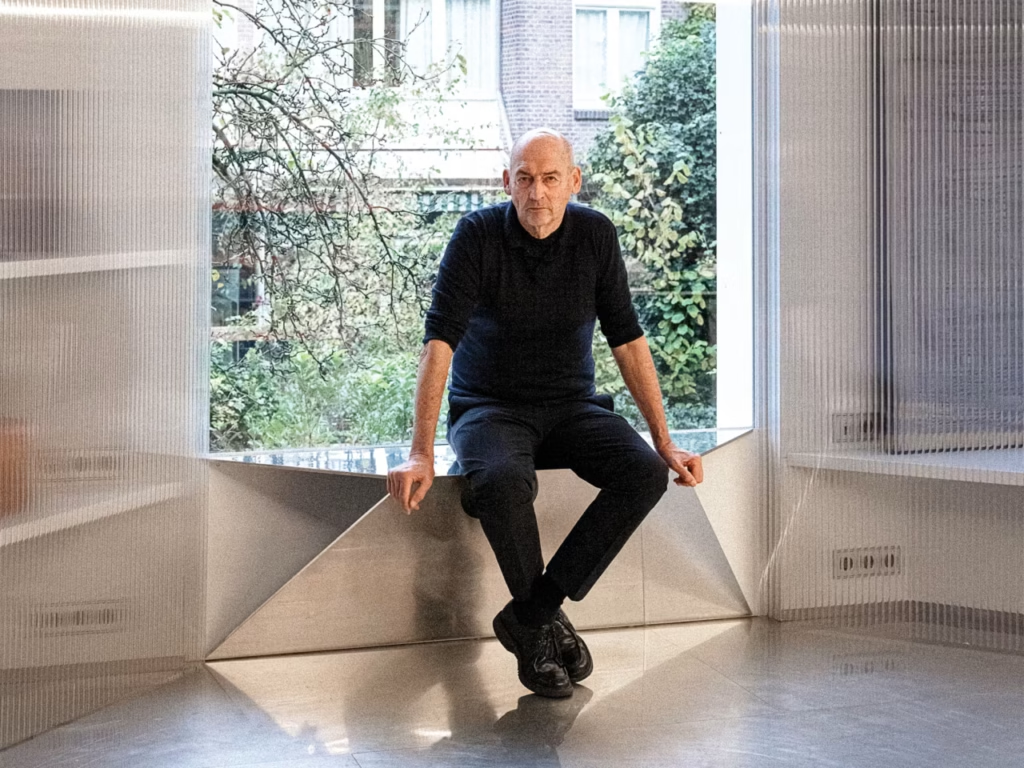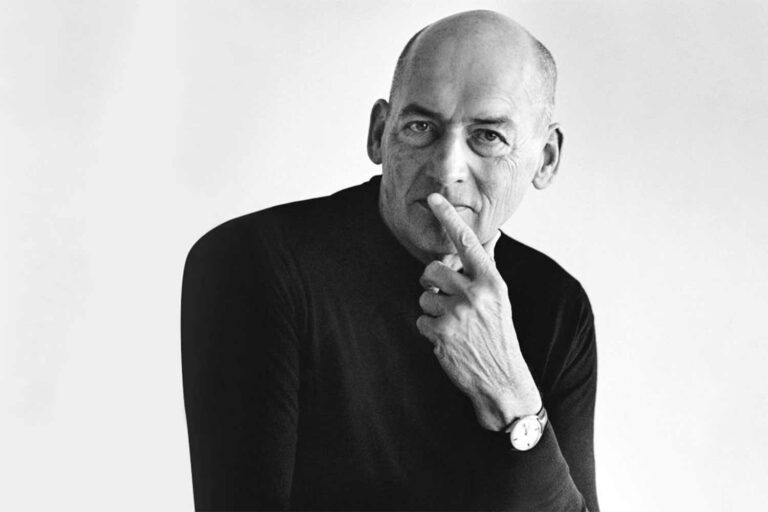
Rem Koolhaas, a Dutch architect, theorist, and writer, is one of the most influential figures in contemporary architecture. By combining philosophy, theory, and design, he has developed a unique approach to modern and minimalist architecture. His perspective on architecture extends beyond constructing buildings, encompassing the analysis of cities, culture, and society.
Early Life and Education
Born in 1944 in the Netherlands, Rem Koolhaas initially studied filmmaking and journalism before developing an interest in architecture. He pursued his architectural education at the Architectural Association (AA) School in London and later taught at Cornell University, where he deeply analyzed urban spaces.
Architectural Style and Philosophy
Rather than following traditional styles, Koolhaas views architecture as a tool for analyzing and redefining cities and cultures. His key design principles include:
Avoiding a Fixed Style: He rejects rigid architectural forms, designing buildings based on their social and cultural contexts.
Emphasis on Urbanism and Change: In his book Delirious New York, he examines the transformation of New York City and its impact on architecture.
Blending Public and Private Spaces: Many of his projects aim to create dynamic interactions between public and private areas.
Minimalism in Design: By employing clean lines and open spaces, he crafts minimalist yet complex architecture.
Notable Works
Rem Koolhaas and his firm, OMA (Office for Metropolitan Architecture), have completed major projects worldwide. Some of his most famous works include:
Seattle Public Library (2004): A uniquely designed structure that incorporates glass, steel, and open spaces to create a modern reading environment.
CCTV Headquarters in Beijing (2012): An iconic building that challenges the conventional skyscraper design.
Bordeaux House (1998): A residential project that reflects his concepts of space and movement.
Influence and Legacy
Koolhaas is not only an architect but also a prominent theorist in modern architecture. His works and writings provide architects and urban planners with fresh insights into urbanization and architectural forms.
Conclusion
Through his unique architectural perspective, Rem Koolhaas goes beyond designing buildings, delving into the study of society, urbanism, and space. As a pioneering thinker in modern and minimalist architecture, he continues to inspire future generations.


No comments yet.